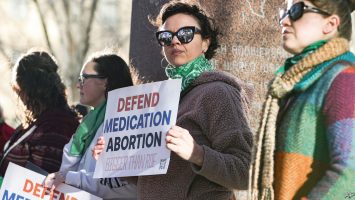
SANDRA DAY O’CONNOR was the first woman to serve on America’s Supreme Court. President Ronald Reagan appointed the Arizonan (who had been both a state senator and judge) in 1981, a year after promising to end the high court’s 191-year monopoly of men. Unlike the second woman to serve on the court—Ruth Bader Ginsburg, who died in 2020 while still in robes—Justice O’Connor vacated her seat a generation before her death at the age of 93 on December 1st. The pathbreaking centrist justice who emerged as a swing vote in countless significant cases thus lived to witness the dismantling of key elements of her legacy as the Supreme Court marched rightwards.
“It is not often in the law”, Justice Stephen Breyer lamented in 2007, a year after Justice O’Connor’s departure, “that so few have so quickly changed so much.” He was summarising his dissent from a 5-4 ruling opposing programmes for racial integration in public schools that Justice O’Connor’s replacement, the much more conservative Samuel Alito, made possible. In 2003 Justice O’Connor had written Grutter v Bollinger, a decision affirming a 25-year-old precedent that had permitted universities to consider an applicant’s race in admissions. Pitching the benefits of affirmative action as “not theoretical, but real”, she pointed to elite universities as the “training ground for a large number of our nation’s leaders”. The “path to leadership”, she wrote, must be “visibly open to talented and qualified individuals of every race and ethnicity”.
Justice O’Connor’s views on race had shifted somewhat: earlier in her tenure she wrote two decisions barring racial preferences in government contracting. But in Grutter she attempted (not to the satisfaction of the four dissenters) to distinguish those from racial considerations in university admissions. After more challenges to affirmative action faltered by a single vote in the 2010s—last repelled in 2016 by Justice Anthony Kennedy, who had a change of heart similar to Justice O’Connor’s—race-based affirmative action finally met its demise in a 6-3 ruling in June 2023.
A concern with the practical effects of judicial decisions guided Justice O’Connor in other areas of the law—with somewhat unpredictable results. In an attempt to clarify which kinds of public religious displays violate the constitution’s bar on “an establishment of religion”, in her third term on the court she developed the “endorsement test”. A nativity scene in the shopping district of Pawtucket, Rhode Island, she concluded, “does not communicate a message that the government intends to endorse the Christian beliefs represented by the creche” and thus comports with the constitution. Five years later, she had a last-minute change of heart in a similar case. This time she voted to strike down a nativity scene inside a Pennsylvania courthouse but decided (after initially voting the other way) that a huge menorah one block away passed constitutional muster. According to Joan Biskupic, an O’Connor biographer, the swing justice acknowledged to a colleague that “this has been a close call for me all along, but I am now firm in my approach.”
However resolute Justice O’Connor may have been in 1989, her endorsement test, like her position on affirmative action, has not survived in the hands of the court’s new conservative supermajority. In a decision in 2022 permitting a public-school American-football coach to lead players in prayer after games, Justice Neil Gorsuch sounded the death knell for the endorsement test. The court “long ago abandoned” Justice O’Connor’s “ahistorical” understanding of the First Amendment, he wrote. The erstwhile test had “‘invited chaos’ in lower courts” and was best left in the dust.
The most profound damage to Justice O’Connor’s legacy—concerning her support for abortion rights—was also completed in 2022 in Dobbs v Jackson Women’s Health Organisation. In Dobbs, five justices reversed Roe v Wade and Planned Parenthood v Casey, the decision from 1992 mostly reaffirming Roe that was anchored by Justice O’Connor and two other Republican appointees: Justices Anthony Kennedy and David Souter. But the demise of abortion rights in Dobbs was foreshadowed one year after Justice O’Connor retired. In 2007 Justice Alito’s vote in Gonzales v Carhart erased Stenberg v Carhart, a decision in 2000 striking down a state ban on “partial-birth abortion” (a termination technique known to doctors as “intact dilation and extraction”). In Gonzales, a 5-4 majority upheld the federal Partial-Birth Abortion Ban Act.
What had changed? One chair at the Supreme Court. Or as Justice Ginsburg put it in the closing of her dissent, the court is “differently composed than it was when we last considered a restrictive abortion regulation”.
Praise for Justice O’Connor’s judicial and human virtues echo in statements her colleagues released after her death. Justice Elena Kagan hailed her “appreciation of this court’s necessary role, but also of its necessary limits” and her “will to promote balance and mutual respect”. Yet Justice O’Connor’s legacy on the liberal side of the ledger lies largely in tatters, while more conservative aspects of her jurisprudence endure.
Her votes in disputes involving state power and property rights have weathered the decades well. In 1992, for example, Justice O’Connor’s majority opinion barring the federal government from “commandeering” state governments paved the way for a number of follow-up decisions protecting states’ rights. Ironically, the most impactful decision of her career—her clinching vote to end the recount in Florida in the aftermath of the 2000 election and, in effect, make George W. Bush president—deviated from her usual commitment to federalism. And it ultimately enabled Mr Bush to appoint Justice Alito, the man who would help roll back many of her achievements on the Supreme Court. ■



